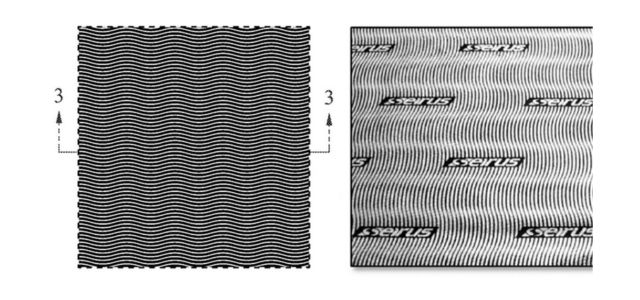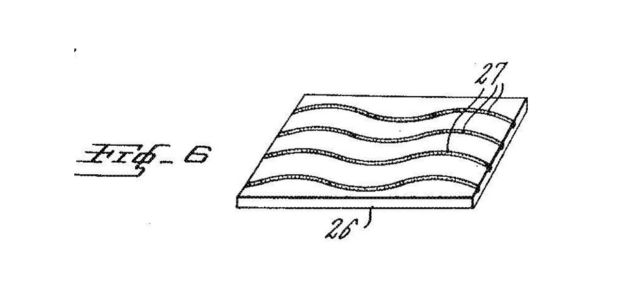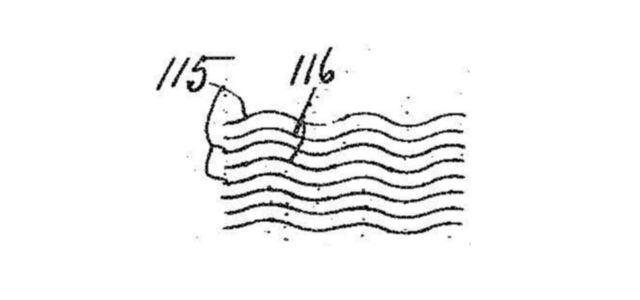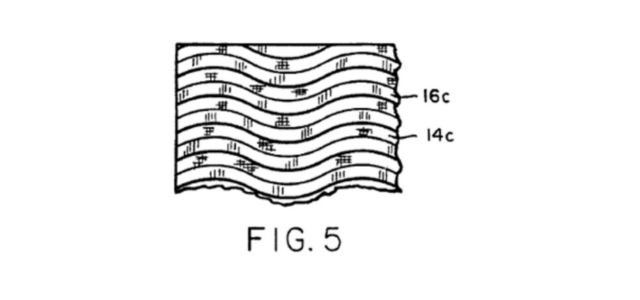The Federal Circuit, in a case of first impression, recently defined the proper scope of “comparison prior art” in evaluating infringement of a design patent. Columbia Sportswear N. Am., Inc. v. Seirus Innovative Accessories, Inc., 80 F.4th 1363 (Fed. Cir. 2023) (“Columbia II”). Acknowledging its precedent had not articulated a test, the Federal Circuit held that “to qualify as comparison prior art, the prior-art design must be applied to the article of manufacture identified in the claim.” Id. at 1378. Notably, this decision narrows the scope to align with what qualifies as anticipatory prior art, tying both to the claimed article of manufacture.
Design patents cover the ornamental design of an article of manufacture. Infringement occurs when the ornamental appearance of the claimed design and the accused design are substantially similar to an “ordinary observer.” Egyptian Goddess, Inc. v. Swisa, Inc., 543 F.3d 665, 670 (Fed. Cir. 2008)(citations omitted). In close cases, where the claimed and accused designs are not plainly dissimilar, the ordinary-observer infringement test is applied in view of comparison prior art, which can provide a helpful frame of reference for identifying salient similarities or distinctions between the claimed and accused designs. See e.g., Id. at 676, 677.
Columbia Sportswear had alleged that Seirus’s gloves and other apparel infringed its U.S. Design Patent No. D657,093 on “heat reflective material.”

Columbia’s D’093 patent design for heat reflective material | Seirus’ accused heat reflective material
Seirus asserted non-infringement, relying in part on three comparison prior art references:

U.S. Pat. 2,539,690 (“Boorn”) Plastic coated fabric with inlayed stripes

U.S. Pat. 1,515,792 (“Respess”) Fabric with threads or cords for making tires

U.S. Pat. 5,626,949 (“Blauer”) Breathable shell for outerwear
In 2016, the District Court granted summary judgment of infringement. Columbia Sportswear N. Am., Inc. v. Seirus Innovative Accessories, 202 F. Supp. 3d 1186, 1196 (D. Or. 2016). It found most of the prior art fabric wave patterns were of limited relevance because they “cover[ed] products far afield” from heat reflective material. Id. Seirus appealed and that judgment was vacated by the Federal Circuit, which held that the relevance of comparison prior art was a fact question that should have been left to a jury. Columbia Sportswear N. Am., Inc. v. Seirus Innovative Accessories, Inc., 942 F.3d 1119 (Fed. Cir. 2019).
After remand, a jury considered Seirus’ comparison prior art and returned a verdict that Seirus’ fabric design did not infringe. Columbia appealed, arguing that the District Court erred by not articulating the proper standard for the jury to decide what constitutes comparison prior art. The Federal Circuit agreed that the error was prejudicial and clarified the law, holding that “to qualify as comparison prior art, the prior-art design must be applied to the article of manufacture identified in the claim.” Columbia II, 80 F.4th at 1378. It reasoned this standard:
- Comports with the purpose of comparison prior art “to help inform an ordinary observer’s comparison between the claimed and accused designs—designs that, necessarily, must be applied to the same article of manufacture.” (“Naturally, prior-art designs will help in that comparison only to the extent that they too are applied to that article of manufacture.”)
- Is consistent with the results of many prior decisions. Id. at 1379
- Provides for a common standard for identifying prior art that is anticipatory for invalidity and comparative for infringement and makes “good practical sense.” Id.
Remanding the case back to the District Court for further proceedings, the Federal Circuit declined to address whether Seirus’ comparison prior art constituted heat reflective material and posited whether “heat reflective material” might now require a claim construction. Id. at 1382.
Going forward, Columbia II will likely favor patent owners by limiting comparison prior art an accused infringer can rely on for non-infringement. But it also highlights the role the identified article of manufacture has in defining the scope of protection of a design patent. While applying the same standard for anticipatory and comparison prior art should help to reduce ambiguity for all litigants, it will likely bring more attention to claim construction to define the scope of the claimed article of manufacture and applicable prior art.

Written by Henry Gabathuler
Partner, Leason Ellis LLP
You may also like…
Welcome to Hangzhou! The AIPPI World Congress 2024
AIPPI World Congress 2024 opened its doors in Hangzhou, China, on Saturday, 19 October. All attending were warmly...
Crystalizing plant variety infringement protection in India
On September 20, 2024, the Delhi High Court ruled in Pioneer Overseas Corporation v. M/s Evercrop Agro Science &...
German criminal court finds three defendants guilty of fraud for sending misleading invoices to EUIPO customers
In September 2024, the Munich Court (Germany) found three defendants guilty of commercial gang fraud for sending...
Contact us to write for out Newsletter














